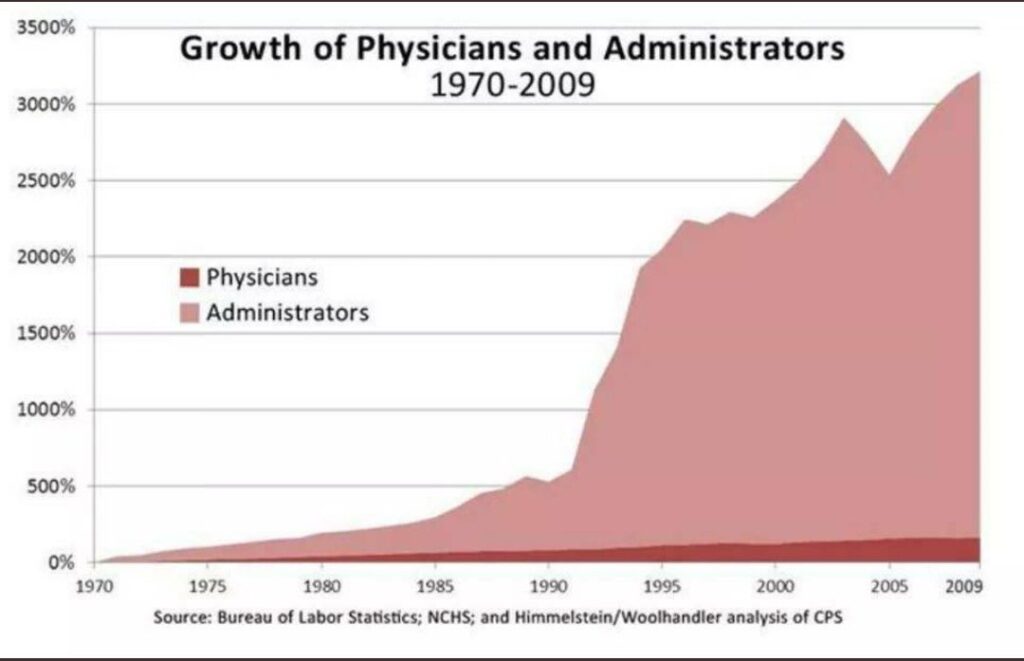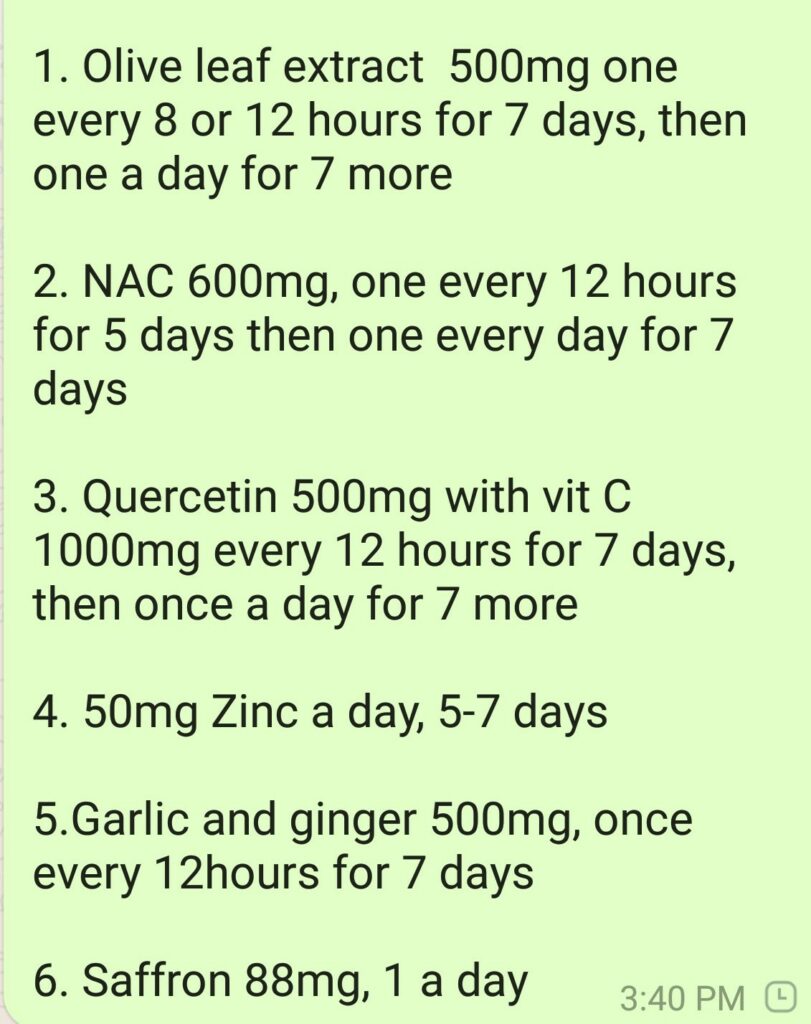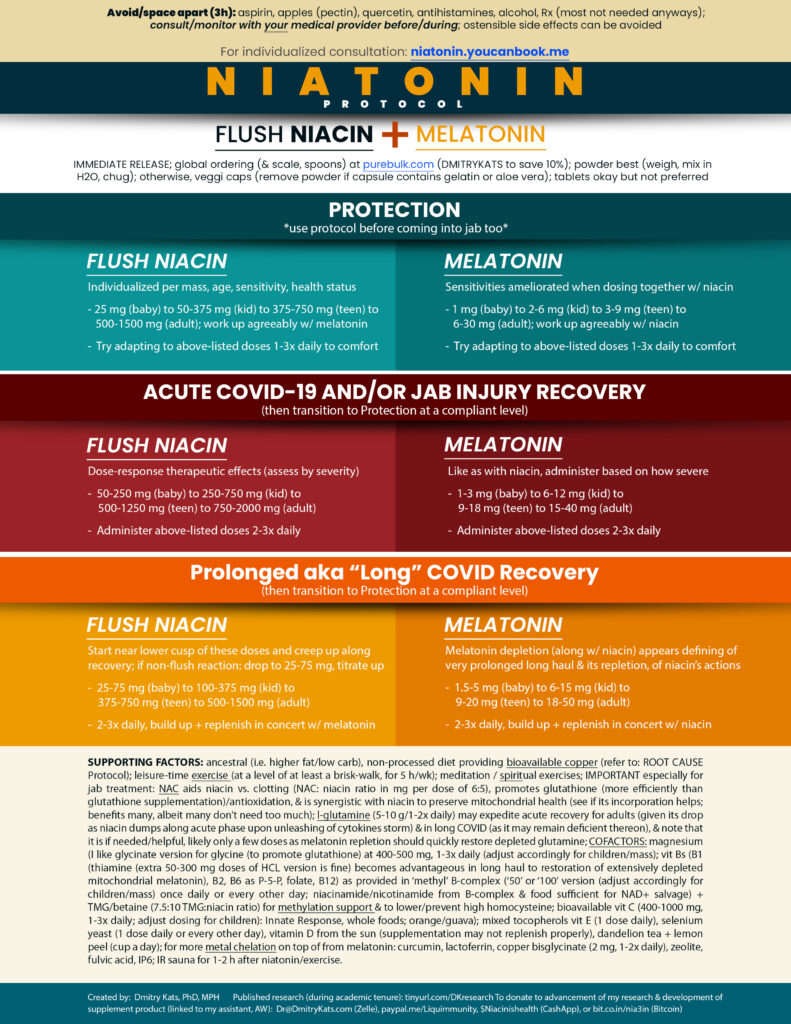There is a cobra toxin-like gene sequence in the chimeric spike protein of either the SARS-C0V-2 virus, or the CoV injection’s spike sequence. (1) It likely can paralyze the function of nAChR clolinergic receptors, (4), . . . and medical world seems to be ignoring or denying that.
The solution is simple, though controversial – just start nicotine – OOOH, BUT THEN -> ADDICT! True, better off -> dead?
The dysfunction may be involved in the excessive menstrual bleeding or severe colitis like diarrhea. The cholinergic receptors also help modulate immune function to not produce too many inflammatory cytokines.
Chimeric – made of many species. The SARS-CoV-2 spike protein, and the sequence used for the CoV injections, also have similar genetic sequences to a wasp toxin, and it has genes from HIV and MERS. Chimeric – like the many headed hydra of mythology – they can all bite, and all may need to be dealt with to achieve health.
Summary:
- Spike protein or the S1 subunit have a snake venom toxin like sequence which can block nAChRs receptors, and it disrupts the function of the nAChRs. (1, 4)
- Nicotine is protective of the function of nAChR receptors, it is an agonist, an activator. It is addictive, yes, so is health.
- The alpha 7 nAChRs are involved in preventing cytokine storm over-immune reactions, (2) ;
- nAChRs are also involved in: menstruation/endometrial tissue (3); regular bowel movements; sperm motility; and functioning nAChRs are critical for prenatal and child development of the retina and eyes, and throughout life for retinal health, (5); nAChRs are needed to be able to send nerve signals from the ears to the brain – ie – to be able to “hear”. (7)
TRP channels are also needed to be able to hear, they are in the inner ear hair cells. (10) They are also throughout the body, needed for fetal development, (11), and magnesium absorption in the intestines, ().
Reports of harm to vision & hearing of children have been reported to VAERS.
VAERS reports of adverse reactions involving CoV injections include reports of children going blind or deaf. (6) That may involve cholinergic dysfunction of the nAChR receptors. (5, 7)
Spontaneous abortion/miscarriage in the first trimester has also been reported for most women who received CoV injections during the first trimester. (ref to add)
Lack of magnesium due to TRP channel dysfunction in the GI tract may be a factor in risk to a fetus if the TRP channels’ function is loss – which resulted in death, in a genetic animal study.
“Genetic inactivation of Trpm7 in mice results in early embryonic death17, 19. Conditional tissue-specific inactivation of Trpm7 in mice showed that TRPM7 plays a critical role in morphogenesis of various internal organs19,20,21.” (12)
Hearing & TRP channels: Hearing loss likely also involves damage to the inner ear hair cells. The TRP channel’s ankyrin repeat domains can be affected by the spike protein. (10) TRP channels with long stretches of ankyrin repeat domains are abundant in inner ear hair cells as they form a coil like area that can sense mechanical pressure and activate the TRP channel if a strong enough force is exerted on it. (8, 9) The open area of the ion channel is usually formed as an empty space between two very large protein subunits – similar building blocks put together in a circular pattern that can leave an open channel in the middle.
Simple solution – soak in magnesium sulfate and it enters the body through hair follicle pores – larger than TRP channels.
Epsom salt soaks are the simple solution to bypass the poor absorption of magnesium in the digestive tract. Both the magnesium and the sulfate are protective to the inner ear hair cells and the rest of the body. The hydrated form of a bath or foot soak may aid in the absorption. Magnesium sulfate was well absorbed from a bath relative, based on change in blood levels of magnesium. There have been less good results seen in topical magnesium chloride studies.
One to two cups of Epsom salt for a half-full bath, soak for 20-40 minutes. One cup or so in a large bucket or bin so more than the feet can soak, and soak for 20-40 minutes. Depending on the severity of magnesium deficiency a soak 1-3 times per week may be needed to help prevent muscle cramps or anxiety/anger. Low magnesium can affect depression risk or psychosis also.
Blocking nAChRs may add to risk of excess cytokines -sepsis; they help prevent an over-active production.
The retina is the area in the back of the eye where light sensing rod and cone cells are located. Activating the alpha7 nAChR type of receptors lead to improved cell survival in a model of glaucoma, (5) possibly aided by the anti-inflammatory role.
“Retinal ganglion cells treated with the α7 nAChR agonist [such as nicotine] alone demonstrated a 28.0% (± 12.8%) increase in cell survival over untreated control.”
The cholinergic nAChR receptors are involved in modulating an inflammatory cytokine response – so that it isn’t excessive and producing an over-active amount of cytokines as seen in sepsis.
“Due to its role in the downregulation of the production of pro-inflammatory cytokines, 33–35, it has been suggested that the α7 nAChR may be involved in the hyper-inflammation response that can be caused by SARS-CoV-2. 9, 36” (2)
So the more obvious colitis or excessive menstrual bleeding symptoms experienced from being around recently CoV injected people, may be an indicator that other excessive inflammatory responses are also happening throughout the body – and the solution is the same: nicotine activates the nAChRs and is protecting them, taking up the open spot in the receptor so S1 or Spike protein can not lodge in the spot instead – blocking its immunomodulatory or other functions.
Snake toxin sequence more exposed on the freed S1 subunit portion of the chimeric spike protein.
The chimeric spike protein can split into parts and both parts of the main spike are able to interact with cell receptors, S1 and S2. The gene sequence that is similar to a snake and snail type of toxin becomes more exposed on the separate S1 subunit – meaning it is likely then more interactive with nicotinic Acetylcholine Receptors.
“Notably, the exposure of this motif and its close sequential neighbors is further accentuated in the S1 trimer (Fig. 2C) shed after cleavage by the human proteases (TMPRSS2 or furin) to enable the activation of the fusion trimer of S2 subunits.” (1)
The ability to split into parts, at the Furin Cleavage Site (FCS), is unique to the chimeric spike protein. Other coronavirus spike proteins do not have that capability.
Furin Cleavage Site
Chimeric spike protein is unlike any other CoV spike in that it can break into parts, subunits, at the Furin Cleavage Site (FCS), leaving S2 attached to the base part and freeing S1, both elongated halves of the spike: /\_ -> / and \_ .
The full spike can interact with ACE2 and various receptor types – and the S1 and S2 subunits can also, they are elongated. The base parts are smaller. Receptors are like a keyhole, & the spike, S1, & S2 are like a key that can fit in, but jam it -> no function, or dysfunction.
The S2 and base, \_ , stays attached to the human cell membrane if produced by a CoV injected person, (which would never happen in a real viral infection); or it would stay on the viral membrane in an CoV infection.
The S1, / , is freed, loose, floating in extracellular fluid… and the gene sequence that is cobra toxin like, PRRA, is more exposed on the freed S1, than it is in the full spike. The freed S1 could then travel to other areas of the person & block their nAChR receptors, or it might be excreted in sweat or breathed out.
The fact that un-CoV-injected people are getting symptoms after being around CoV-injected people suggests that it is an aerosolized risk. Standard fabric face masks would not be protective but better quality KN95 masks seem helpful.
People getting menstrual bleeding symptoms after being around recently injected people is likely because S1 exposure in a large enough load to be paralyzing the function of nAChR receptors in endometrial tissue (uterus). That link mentioned smokers are less at risk for endometreosis (excess menstrual blood but internal clotting), & that nAChR agonists might be a therapy to consider. (3)
Health Aids for Special Times – foods, phytonutrients and nutrients, and some lifestyle habits that may help protect against chimeric protein issues.
This document includes a lengthy section titled Excessive Menstrual Bleeding with information about nicotine, and colitis related to spike exposure may also be related to nAChR disruption and benefit from nicotine treatment – that is the problem it helped me with. The document also has information on Sleep and Iodine/Thyroid, in addition to chimeric protein related aids. When many types of receptors can be disrupted – they all need to be protected ideally. My website jenniferdepew.com has page Nutrients and page Cofactors with dosing details about a variety of other nutrients not specified in the document.
- Depew J, Health Aids for Special Times, includes images from FullScript.com, https://docs.google.com/document/d/1rfJFfDmSMtJiZjQIwdTJVQ6IQmJXktp88sYCaiP_Ufg/edit?usp=sharing
Disclaimer: This information is being shared for educational purposes within the guidelines of Fair Use. It is not intended to provide individual medical guidance. Please seek a health care provider for that purpose, such as a functional health nutritionist or practitioner.
Reference List
- Mary Hongying Cheng, She Zhang, Rebecca A. Porritt, Magali Noval Rivas, Lisa Paschold, Edith Willscher, Mascha Binder, Moshe Arditi, Ivet Bahar. Superantigenic character of an insert unique to SARS-CoV-2 spike supported by skewed TCR repertoire in patients with hyperinflammation. Proceedings of the National Academy of Sciences. Sep 2020, 202010722; DOI: 10.1073/pnas.2010722117 https://www.pnas.org/content/early/2020/09/25/2010722117
- Oliveira, A., Ibarra, A. A., Bermudez, I., Casalino, L., Gaieb, Z., Shoemark, D. K., Gallagher, T., Sessions, R. B., Amaro, R. E., & Mulholland, A. J. (2020). Simulations support the interaction of the SARS-CoV-2 spike protein with nicotinic acetylcholine receptors. bioRxiv : the preprint server for biology, 2020.07.16.206680. https://doi.org/10.1101/2020.07.16.206680 https://www.ncbi.nlm.nih.gov/labs/pmc/articles/PMC7386492/
- Wu Y, Wang LP, Pan JQ. Nicotinic acetylcholine receptor agonists may be a novel therapy for endometriosis. Med Hypotheses. 2011 Nov;77(5):745-7. doi: 10.1016/j.mehy.2011.07.028. Epub 2011 Aug 10. PMID: 21835554. https://pubmed.ncbi.nlm.nih.gov/21835554/
- Farsalinos, K.; Eliopoulos, E.; Leonidas, D.D.; Papadopoulos, G.E.; Tzartos, S.; Poulas, K. Nicotinic Cholinergic System and COVID-19: In Silico Identification of an Interaction between SARS-CoV-2 and Nicotinic Receptors with Potential Therapeutic Targeting Implications. Int. J. Mol. Sci. 2020, 21, 5807. https://doi.org/10.3390/ijms21165807 https://www.mdpi.com/1422-0067/21/16/5807/htm
- Lyons Leah, Neuroprotective Effect of an Α-7 Nicotinic Acetylcholine Receptor Agonist and a Positive Allosteric Modulator in an In Vitro Model of Glaucoma. (2014) Masters Thesis, http://scholarworks.gvsu.edu/theses/740 https://www.dropbox.com/s/v8jrb56w1iwzs1u/physician_assistant_studies_thesis.pdf?dl=0
- Stew Peters Show, CHILD JAB INJURIES – FIRST NUMBERS REPORTED, SERIOUS DANGER! THEY ARE KILLING THE CHILDREN. https://www.bitchute.com/video/HIEsLK1BO1bQ/ via “VAERS reports include children going blind and deaf after Covid-19 v@ccine.” https://twitter.com/awakenindiamvmt/status/1443547600460738568?s=20
- Moglie Marcelo J., Marcovich Irina, Corradi Jeremías, et al., Loss of Choline Agonism in the Inner Ear Hair Cell Nicotinic Acetylcholine Receptor Linked to the α10 Subunit. Frontiers in Molecular Neuroscience. 14 (2021) pp 5, DOI=10.3389/fnmol.2021.639720 https://www.frontiersin.org/articles/10.3389/fnmol.2021.639720/full
- Gaudet R. A primer on ankyrin repeat function in TRP channels and beyond. Mol Biosyst. 2008;4(5):372-379. doi:10.1039/b801481g https://www.ncbi.nlm.nih.gov/labs/pmc/articles/PMC3006086/
- Phelps CB, Huang RJ, Lishko PV, Wang RR, Gaudet R. Structural analyses of the ankyrin repeat domain of TRPV6 and related TRPV ion channels. Biochemistry. 2008;47(8):2476-2484. doi:10.1021/bi702109w https://www.ncbi.nlm.nih.gov/labs/pmc/articles/PMC3006163/
- Halim Maaroufi, Interactions of SARS-CoV-2 spike protein and transient receptor potential (TRP) cation channels could explain smell, taste, and/or chemesthesis disorders. 15 Jan 2021, https://arxiv.org/abs/2101.06294
- TRPM7 channels are needed in embryo development and also have an ankyrin repeat sequence. Jingjing Duan, Zongli Li, Jian Li, et al., Structure of the mammalian TRPM7, a magnesium channel required during embryonic development. Proceedings of the National Academy of Sciences Aug 2018, 115 (35) E8201-E8210; DOI: 10.1073/pnas.1810719115 https://www.pnas.org/content/115/35/E8201
- Ferioli, S., Zierler, S., Zaißerer, J., et al. TRPM6 and TRPM7 differentially contribute to the relief of heteromeric TRPM6/7 channels from inhibition by cytosolic Mg 2+ and Mg ATP. Sci Rep 7, 8806 (2017). https://doi.org/10.1038/s41598-017-08144-1 https://www.nature.com/articles/s41598-017-08144-1
Notes related to specific health aids that may protect against epigenetic changes, or in other ways.
- Beta-glucan – epigenetic protection factor in mushrooms and Nutritional yeast flakes: Novakovic, B., Habibi, E., Wang, S. Y., Arts, R., Davar, R., Megchelenbrink, W., Kim, B., Kuznetsova, T., Kox, M., Zwaag, J., Matarese, F., van Heeringen, S. J., Janssen-Megens, E. M., Sharifi, N., Wang, C., Keramati, F., Schoonenberg, V., Flicek, P., Clarke, L., Pickkers, P., … Stunnenberg, H. G. (2016). β-Glucan Reverses the Epigenetic State of LPS-Induced Immunological Tolerance. Cell, 167(5), 1354–1368.e14. https://doi.org/10.1016/j.cell.2016.09.034 https://www.ncbi.nlm.nih.gov/labs/pmc/articles/PMC5927328/
- Herbacetin, isobavachalcone, quercetin 3-β-d-glucoside and helichrysetin were found to block the enzymatic activity of MERS-CoV 3CLpro. https://pubmed.ncbi.nlm.nih.gov/31436895/
- “It`s basically MRSA; not only bacterial but also fungal.” – F. J. Herrmann https://twitter.com/4141245879freun/status/1443964616741199877?s=20
- @microRNApro is on the same root. miR-129-5p in cancer – in my citation list above. miR-195-3p in macrophage inflammation. https://twitter.com/microRNApro/status/1443965887514562560?ref_src=twsrc%5Etfw Both essential to the regulatory process. https://twitter.com/4141245879freun/status/1443967393710104577?s=20
- Xiong, J., Ma, F., Ding, N., Xu, L., Ma, S., Yang, A., Hao, Y., Zhang, H., Jiang, Y. (2021). miR-195-3p alleviates homocysteine-mediated atherosclerosis by targeting IL-31 through its epigenetics modifications. Aging Cell, 00, e13485. https://doi.org/10.1111/acel.13485 https://onlinelibrary.wiley.com/doi/10.1111/acel.13485
- via “Don’t have a CVA” – James V. Kohl, “Our findings shed new light on the involvement of miR-195-3p in macrophage inflammation, which might provide a potential therapeutic strategy for atherosclerosis induced by Hcy.” https://twitter.com/microRNApro/status/1443965887514562560?s=20




